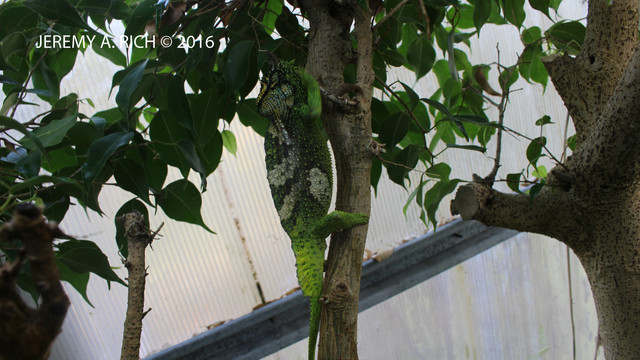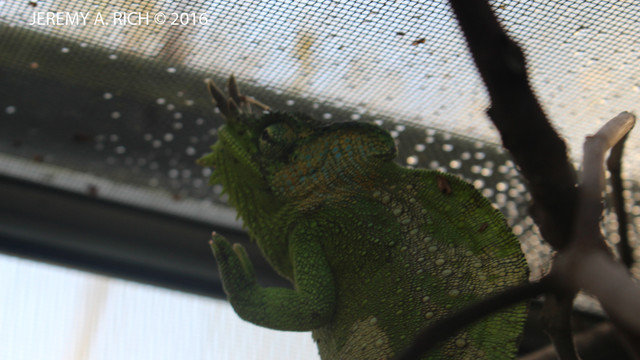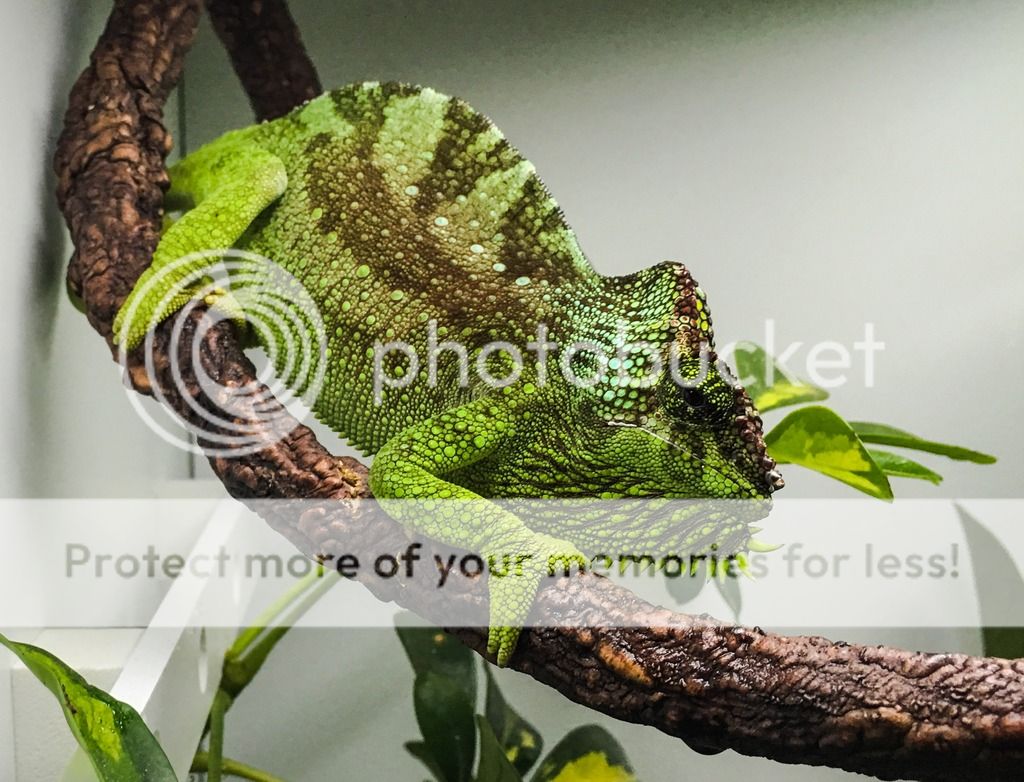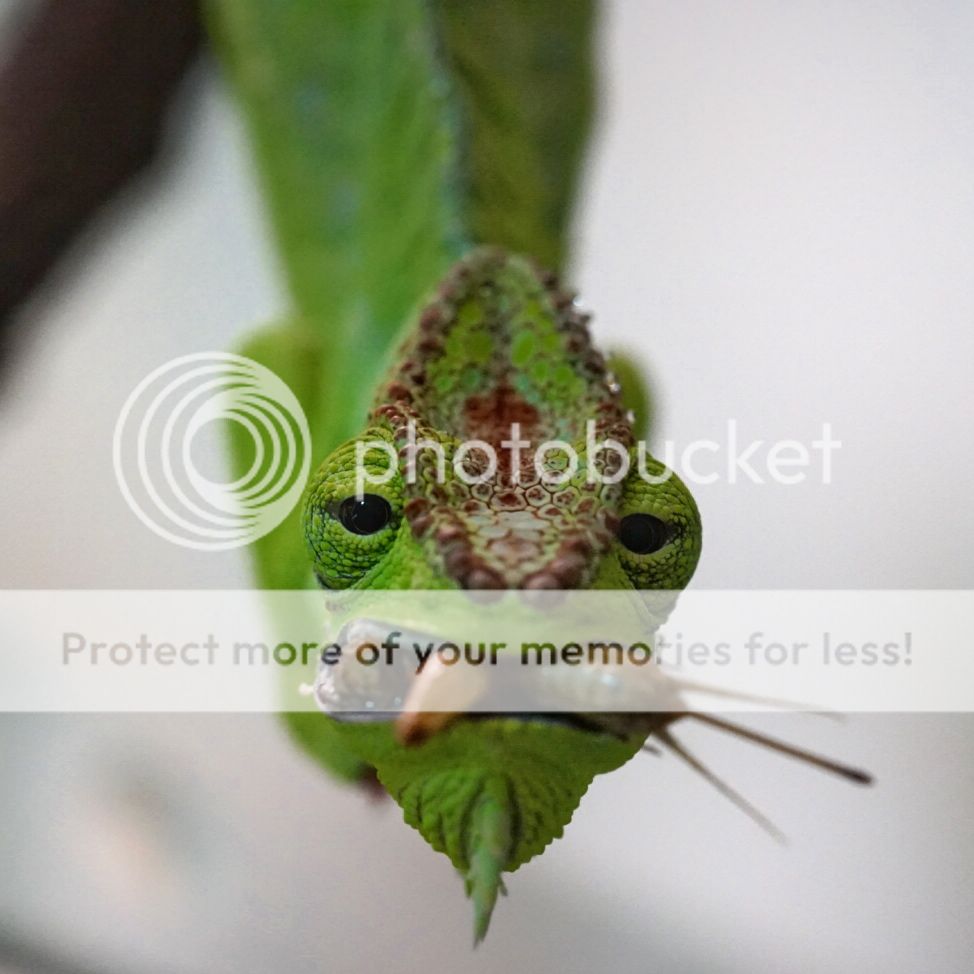jajeanpierre
Chameleon Enthusiast
Since everyone is pitching in. These are a couple photo's of my lone male Trioceros quadricornis gracilor Rex. When he displays he has blue with gold and some orange around his head. Plus he has got a complete set of 4 horns. However they were knocked out of alignment during importation. He has got good sailfins on his back and tail. He has got some great phenotype's that I want to breed. He is exceedingly difficult to photograph.


Best Regards
Jeremy A. Rich
@Motherlode Chameleon Jeremy, here's a picture of your boy a week or two after import. The ugly duckling turned into a swan! See, I told you I had looked at him before you bought him! He has a wonderfully tall sail fin; I remember that about him. [For those not familiar with quads and graciliors, their white spots/markings remain the same throughout their life, which is how I can identify a baby in the middle of a big clutch of miscellaneous green and white babies. Jeremy's Rex has some unique markings. ]







